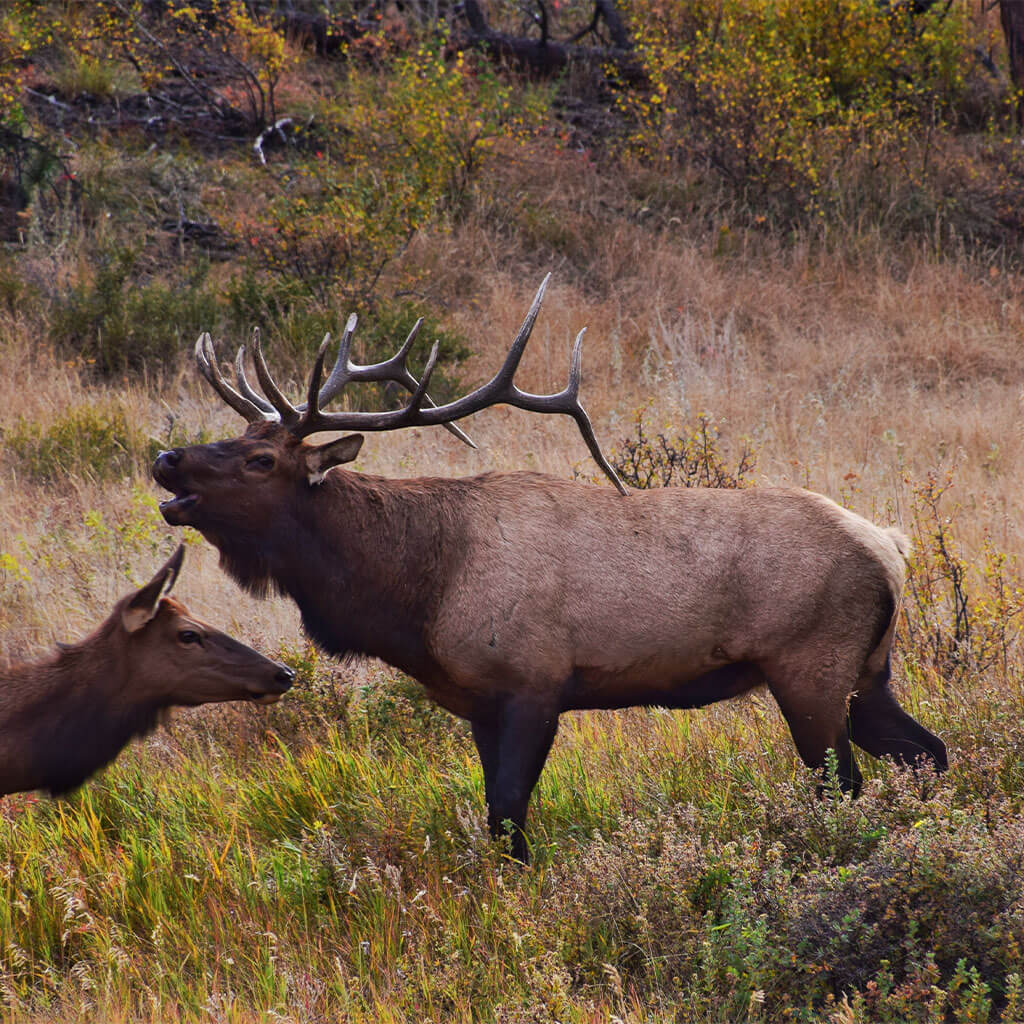Inspired for an Adventure? Check out Beef Stroganoff - Pouch and Beef Stew - Pouch
Free Ground Shipping On All Orders
Over 2,100 Reviews
Add description, images, menus and links to your mega menu
A column with no settings can be used as a spacer
Link to your collections, sales and even external links
Add up to five columns
Add description, images, menus and links to your mega menu
A column with no settings can be used as a spacer
Link to your collections, sales and even external links
Add up to five columns


Fall offers some of the very best wildlife-watching opportunities of any season in North America. Across much of the continent, animals are preparing in one way or another for the rigors of winter: packing on pounds, readying larders, embarking on long-distance treks to balmier climes. Some critters also breed during the fall, an exciting phase that generally sees them more active and visible than other times of year.
In short, all-purpose nature enthusiasts and photographers have much to enjoy as the days shorten, the leaves change, and the temperatures get deliciously crisp. Here are three of the greatest wildlife spectacles to put on your autumnal bucket list!
Rut Rumbles (Hoofed Animal Mating)

North America’s native hoofed mammals (ungulates) breed, depending on the species, between high summer and early winter. The majority have their breeding season, or “rut,” in the fall, when autumn wildlife watchers (not to mention hunters) get to enjoy these majestic beasts looking just about their most impressive and acting out some of their most dramatic behavior (some of our hoofed mammals, namely pronghorn and bison, rut earlier, in high or late summer).
Elk Rut
The elk rut generally stretches between September and early October, and anyone spending much time in wapiti country during this time of year is likely to notice some of the action—not least on account of those iconic and far-traveling bugles the bulls let loose this time of year. Those bugles, which are a combination of a deeper bellow and a high-pitched whistle, announce a bull’s presence to both cow elk and other bulls. Usually bulls sort out dominance issues during the rut through signals such as the bugle as well as displaying their size and vigor. Sometimes, though, neither of two bulls confronting one another is willing to back down, and in that case they may lock antlers and fight.
Where to See
You’ve got decent chances of seeing (and hearing) the elk rut underway in many national parks and forests in the American West, including Yellowstone (where visitors to Mammoth Hot Springs in particular often find themselves in the middle of hopped-up elk activity this time of year) and Rocky Mountain national parks.
Elk numbers and range have re-expanded in the East, where elk were extirpated between the 17th and 19th centuries; one great place to seek out bugling bulls is the Cataloochee area in Great Smoky Mountains National Park.
Moose Rut
Moose—the biggest members of the deer family in the world—tend to enter rut just a little after elk. While the moose rut is somewhat less conspicuous—bulls don’t make a comparably loud and frequent call as a wapiti bugle, and they don’t gather together harems of cows like bull elk—it’s still an excellent time to look for these towering and gangly creatures. Needless to say, a bull moose in peak rut condition is one of the most awe-inspiring sights in the natural world, and you may even see a couple of bulls square off—either in side-by-side stiff-walking, vegetation-thrashing displays, or, perhaps, in an actual battle, which can be mighty intense.
Where to See
From the lakelands of Maine and the Upper Midwest North Woods to the Southern Rockies of Colorado and the taiga of Alaska, you’ve got loads of good places to go for potentially landing looks at rutting bull moose.
Keep Your Distance!
We ought to pause here and emphasize that, while you should always keep your distance from elk and moose (both for your own safety and to avoid stressing wildlife), it’s especially critical during the rut: Both bull elk and bull moose can be unpredictable and aggressive during this testosterone-surging period, and needless to say these huge, antlered animals can cover ground quickly and do some major damage.
Deer, Mountain Sheep & Goat Rut
November sees America’s white-tailed, mule, and black-tailed deer enter rut. The sight of a mature buck in the early days of the rut—with their thick throats and noble antlers—can be unforgettable.
Late fall is also the peak breeding season for the continent’s mountain sheep, though their rutting grounds tend to be a bit more off the beaten track. Wildlife photographers trek into the high country in hopes of capturing perhaps the most spectacular rutting behavior of any North American ungulate: the head-bashing fights of bighorn rams.
Those higher elevations are also where mountain goats breed between late October and early December. Male mountain goats, or billies, don’t butt heads like bighorns, but instead slash at one another with their dagger-like horns—less showy than the sheep method, but also more likely to result in injuries.
On the Wing: Hawk Migrations

From kaleidoscopic sweeps of warblers sweeping through backyards to the clamor of geese and the rattle of cranes in high-flying, southbound flocks, bird migration is one of the most visible and cherished signs of fall. This time of year, “hawkwatchers” beeline for windy ridgetops and coastal headlands to view (and count) the yearly stream south of raptors, an incredible autumn phenomenon that, for many, remains surprisingly off the radar.
Large Flocks in the Eastern U.S.
Different species of raptors migrate southward at different times and in different styles. Probably the most celebrated flight is that of the broad-winged hawk in the eastern U.S.: These small buteos (the genus of raptors that includes some of the most regularly seen hawks in the country) journey in large numbers, with flocks sometimes passing overhead—and spiraling on conductive thermals—in the thousands. The broad-winged migration is on the early side of things, peaking in September. Turkey vultures, which typically migrate in late September and October, also often soar in flocks and kettles along their way.
Diverse Raptor Groups to Look For
Many other raptors, including red-tailed and red-shouldered hawks, bald and golden eagles, ospreys, and peregrine falcons, don’t migrate in such big organized flocks, but the sheer taxonomic variety at major “hawkwatch” spots is its own attraction: Between September and October, you may get to see all sorts of species winging along as singletons, pairs, or mixed groups.
When & Where to “Hawkwatch”
Unsurprisingly, many birds of prey like to take advantage of northerly tailwinds during the fall migration. The day following a cold front, with a northwesterly airflow, can be particularly productive for hawk-watching.
Great sites for watching migrating raptors in the fall include Hawk Ridge (Minnesota), Cape May (New Jersey), Lighthouse Point (Connecticut), Hawk Mountain (Pennsylvania), Chelan Ridge (Washington), and the Goshute Mountains (Nevada). Learn more here
Monarch Butterfly Migration

Birds aren’t the only wayfarers this time of year. Monarch butterflies in North America make their own grand journeys in the fall, covering whopping distances that seem improbable for such fluttery little things. Eastern monarchs may travel more than 3,000 miles to reach wintering grounds in fir forests of Mexico’s Sierra Madre Mountains. Western monarchs, meanwhile, drift their way to conifer and eucalyptus groves along the California coast.
Where to See
Depending on where you live, you may luck out with some migrating monarchs passing through your own backyard. There are also natural topographic funnels and congregation sites to key into, including coastal peninsulas and high ridge crests. One excellent place in the East to watch for butterflies on the move during early fall is the Blue Ridge Parkway, where open meadows and balds provide prime viewing of these tiny, colorful travelers.
Mark Fall With Wildlife Wonders
From the bugle of a bull elk to a sky brimming with wheeling hawks, now’s the time to get out there and experience North America’s fabulous wildlife in full-on fall mode. If you’re taking a hike or weekend trip to see the glory of the season, travel prepared with our freeze-dried meal selections!

MRE vs Freeze-Dried Food

What Ingredients Are in Mountain House Freeze-Dried Meals?


Stay Hungry for Adventure
Sign Up for Delicious Outdoor Meals & Exclusive Offers!
By clicking ‘Join Now’, I agree to the Terms of Service and Privacy Policy.


Join the adventure
©2026 Mountain House — All Rights Reserved.
Your Cart is Empty
Continue ShoppingYour Cart
Subtotal
$0.00
EXPRESS PAYMENT METHODS AVAILABLE IN CHECKOUT
Taxes and Shipping Calculated at Checkout
Your ExpertVoice deal.
$[Deal Price]
$[Original Price]
Discount applied at checkout.
On sale now — lower than your ExpertVoice discount.
Not eligible for ExpertVoice discount.














